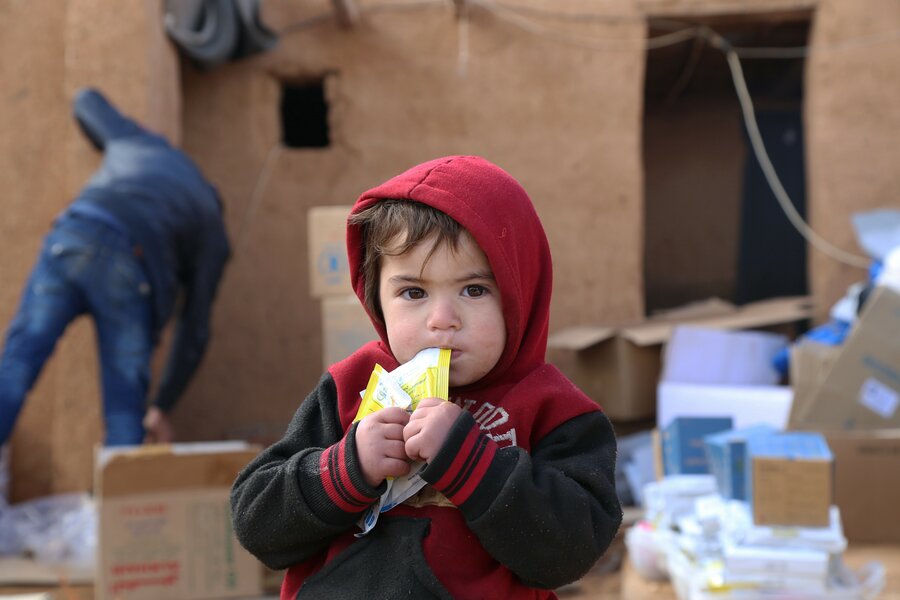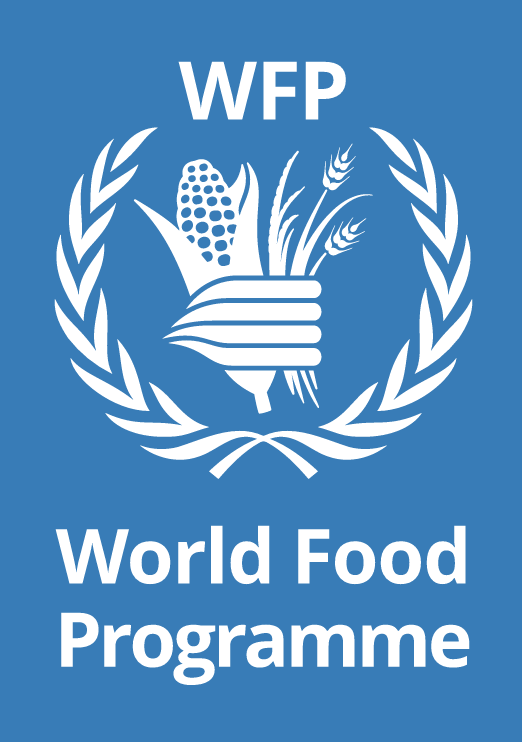WFP works to save and change the lives of more than 115.5 million people in 117 countries and territories. WFP is among the first on the scene in an emergency, providing food and other assistance to the victims of conflict, drought, floods, earthquakes, hurricanes and crop failures, as well as pandemics such as the current global outbreak of COVID-19. At the same time, we keep a sharp focus on sustainable development, providing governments with the support and skills to manage food security in the long term.
In a world where we produce enough food to feed everyone, up to 811 million people — more than 10 per cent of the world’s population — still go to bed hungry each night.
After nearly a decade of progress, the number of hungry people has slowly increased — driven by the twin scourges of conflict and climate change, and now compounded by the COVID-19 pandemic. Meanwhile, costs are rising sharply: the price WFP is paying for food is up 30 percent compared to 2019, and the cost of delivering it has risen by an additional US$42 million a month in the same period.
While Asia is home to the greatest number of undernourished people at 418 million, Africa is the region with the highest prevalence of undernourishment in percentage terms, at 21 percent. This is more than double the rate in all regions, according to the latest edition of the State of Food Security and Nutrition in the World.
Emergency response* and preparedness
WFP is the frontline agency responding to emergencies caused by conflict, climate shocks, pandemics and other disasters. We also coordinate responses to large-scale emergencies on behalf of the wider humanitarian community, as lead agency of the Logistics Cluster and the Emergency Telecommunications Cluster. Our focus is also on emergency preparedness, working with partners to provide early warning and helping communities lessen the impact of looming disasters.
- Each day WFP has up to 5,600 trucks, 30 ships and 100 planes on the move, delivering food and other assistance.
Current emergencies
Ukraine
WFP has launched an emergency operation to provide food assistance for people fleeing the conflict inside Ukraine and in neighbouring countries. There are plans to assist up to 3.1 million people inside the country. WFP teams have been setting up operations and hubs in a number of locations in neighbouring countries, both to facilitate delivery of food assistance into Ukraine and to assist refugees coming over the borders. WFP is also leading the emergency telecommunications and logistics clusters on behalf of the UN.
Afghanistan
Afghanistan is becoming the world’s largest humanitarian crisis, with 22.8 million people – over half the population – now facing acute food insecurity, including 8.7 million facing emergency levels of food insecurity. An already desperate situation has been compounded by drought, escalating displacement, the collapse of public services and deepening economic crisis. WFP aims to reach 24 million people in 2022 but requires US$2.6 billion to do this.
Northern Ethiopia
Over a year of war has driven people across Northern Ethiopia deeper into hunger. Food security in Tigray region has plummeted since the start of the crisis, with almost 40 percent (2 million people) of the Tigrayan population now severely food insecure. WFP has reached almost 4 million people across northern Ethiopia with food and nutrition assistance since March 2021.
Yemen
A funding crunch has forced WFP to reduce the size of food rations received by 8 million people. The timing could not be worse, as Yemenis deal with a serious escalation in fighting alongside continued economic deterioration. WFP food assistance is a lifeline for families in Yemen, keeping famine at bay for the past few years. Unless contributions are received immediately, a drastic scale-down of WFP’s operation will be required with the risk of leaving families without assistance. See also: Emergency page
South Sudan
South Sudan is facing its highest levels of food insecurity since the country declared independence 10 years ago, with 60 percent of the population increasingly hungry. Chronic sporadic violence, extreme weather and the economic impact of COVID-19 have pushed 7.24 million people into severe insecurity. See also: Emergency page
Northeastern Nigeria
Northeast Nigeria continues to face severe levels of hunger with 2.4 million people currently suffering acute food insecurity and needing urgent assistance in the conflict-affected states of Borno, Adamawa and Yobe. WFP is working with partners to provide life-saving food and nutrition assistance to 1.7 million people. See also: Emergency page
Syria
Multiple shocks – conflict, displacement, a severe economic downturn and the declining value of the Syrian Pound – have pushed more Syrians than ever into poverty and food insecurity. A total 12.4 million people do not know where their next meal will come from – more than at any time during the decade-long conflict. Due to funding constraints, WFP has reduced the size of the monthly food ration that families receive, due to funding constraints.

The Democratic Republic of the Congo
Africa’s second largest country continues to face one of the world’s largest hunger crises – a total 27 million people are acutely food insecure – driven by protracted conflict, disease and climate shocks. DRC is home to the highest number of internally displaced people in Africa at 5.5 million, while almost half-a-million refugees have arrived from neighbouring countries. WFP provides food, nutrition and cash assistance. See also: Emergency page
Sahel
The Sahel is staring down a worsening and complex food crisis as conflict, COVID-19, climate, and rising costs collide to put basic meals out of reach for millions. Over 10.5 million people are facing crisis levels of hunger, including 1.1 million on the brink of famine, across five countries – Burkina Faso, Chad, Mali, Mauritania, Niger. WFP programmes have been more than a lifeline for millions in the Sahel, helping communities grow and prosper despite the challenges they face.
Your Donation will help WFP carry out its critical operations and fight to end world hunger.

